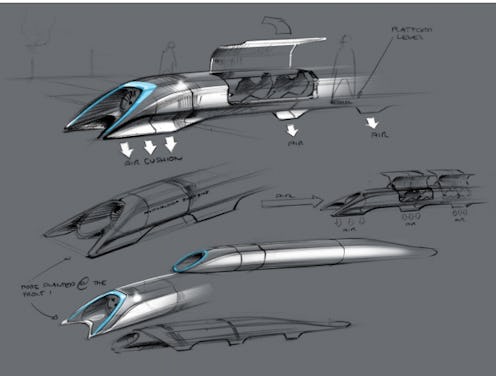News
You Will Not Believe How Fast This Train Can Go

If Elon Musk has his way, a day job in Los Angeles might soon be a perfectly viable prospect for San Franciscans living 400 miles away.
The eccentric entrepreneur and Tesla CEO unveiled his proposal for the “Hyperloop” today, a transportation system that would carry reclining travelers through an enormous tube at 200 miles an hour, zipping them from San Francisco to LA in thirty minutes for merely $20.
"The Hyperloop (or something similar) is, in my opinion, the right solution for the specific case of high traffic city pairs that are less than about 1500 km or 900 miles apart." —Elon Musk
Musk claimed that his system would be safer, faster, and cheaper than the proposed high-speed rail system in California. Projected to debut in 2029, the high-speed rail would take three hours to get from San Francisco to L.A., with ticket prices landing somewhere between $50 and $100. It’s also expected to cost around $70 billion — about ten times more than the Hyperloop’s price tag, which Musk figures to be around $6-10 billion.
“The underlying motive for a statewide mass transit system is a good one. It would be great to have an alternative to flying or driving, but obviously only if it is actually better than flying or driving,” Musk wrote on his blog. “The [high-speed rail] would be both slower, more expensive to operate (if unsubsidized) and less safe by two orders of magnitude than flying, so why would anyone use it?”
The Washington Post's Brad Plumer notes, however, that if the Hyperloop falls victim to the same costly political demands that befell the high-speed rail, its overhead could substantially increase.
Musk, who co-founded PayPal and SpaceX, detailed his plans in a 57-page PDF posted to his blog, wherein he tackled the numerous scientific and physical obstacles to building such a system. While he claims to be too busy with other projects to build Hyperloop himself, he encouraged others to take initiative with the project, and pledged to continuously update the open-source plans as new feedback is incorporated.
(Image: Hyperloop Design / Elon Musk)